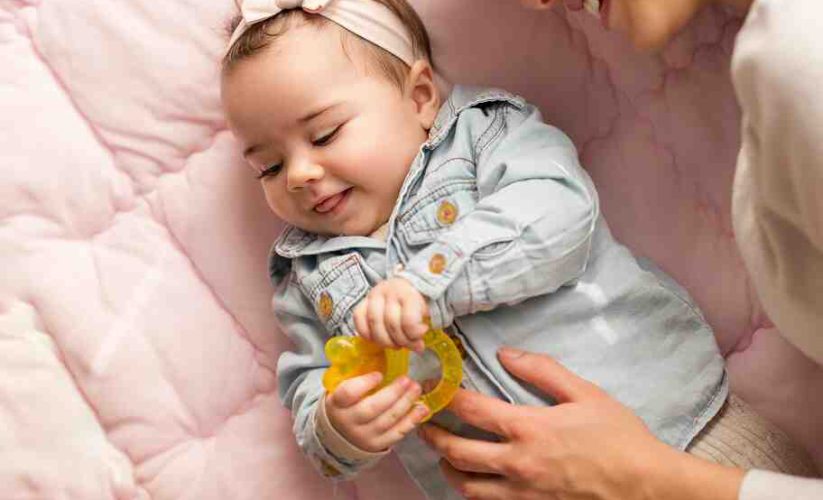
Is Swaddling Safe? Everything Parents Need to Know
Swaddling has been a time-honored practice for centuries, helping babies feel secure and sleep better. However, modern parents often wonder: Is swaddling safe? While swaddling can provide comfort to newborns, there are important safety considerations to ensure it doesn’t pose any risks. This article explores the benefits, potential dangers, and best practices for swaddling your baby safely.
What Is Swaddling?
Swaddling is the practice of wrapping a baby snugly in a lightweight blanket to create a womb-like environment. It helps reduce the startle reflex, preventing unnecessary awakenings and promoting better sleep. Many parents find swaddling useful for soothing fussy infants and establishing sleep routines in the early weeks of life.
Benefits of Swaddling
Swaddling offers several advantages for both babies and parents:
- Better Sleep: Swaddling reduces sudden movements that can wake a baby, leading to longer, more restful sleep periods.
- Calming Effect: The snug wrap mimics the feeling of being in the womb, helping babies feel secure and relaxed.
- Reduced Risk of Sudden Infant Death Syndrome (SIDS): When done correctly and combined with safe sleep practices, swaddling can help prevent a baby from rolling onto their stomach, a risk factor for SIDS.
- Less Crying: Studies suggest that swaddling can reduce excessive crying in newborns, especially those with colic.
- Better Neuromuscular Development: When used appropriately, swaddling can support proper muscle and joint development.
Potential Risks of Swaddling
Despite its benefits, swaddling carries some risks if not done correctly:
- Overheating: Wrapping a baby too tightly or using heavy blankets can cause overheating, which is linked to SIDS.
- Hip Dysplasia: Swaddling too tightly around the legs can lead to hip problems by restricting natural movement.
- Breathing Difficulties: Wrapping too tightly around the chest can make breathing harder for the baby.
- Increased SIDS Risk if Used Incorrectly: If a swaddled baby rolls onto their stomach, it significantly increases the risk of suffocation.
- Dependency on Swaddling: Some babies may become overly reliant on swaddling to sleep, making transitions to unswaddled sleep challenging.
Safe Swaddling Techniques
To ensure that swaddling remains safe for your baby, follow these best practices:
1. Use a Lightweight, Breathable Blanket
Choose a muslin or cotton swaddle to prevent overheating. Avoid thick blankets, as they can trap excessive heat.
2. Keep the Hips Loose
The swaddle should be snug around the baby’s torso but loose around the hips and legs. The baby’s legs should be able to bend and move freely. The International Hip Dysplasia Institute recommends that babies have enough space for their hips to move naturally.
3. Ensure the Swaddle Is Secure but Not Too Tight
While the swaddle should provide a snug feeling, it should not restrict chest expansion or breathing. You should be able to fit two fingers between the baby’s chest and the swaddle.
4. Place the Baby on Their Back
Always put a swaddled baby to sleep on their back. This position minimizes the risk of suffocation and SIDS.
5. Stop Swaddling at the Right Time
Babies typically outgrow swaddling by two to four months. When your baby shows signs of rolling over, discontinue swaddling immediately to prevent suffocation risks.
6. Use a Swaddle Alternative if Needed
For parents concerned about traditional swaddling, swaddle sacks and sleep sacks provide a safer alternative. These products allow for arm movement while maintaining the comforting snugness of a swaddle.
Signs That Your Baby Should Stop Swaddling
If your baby shows any of the following signs, it’s time to transition out of swaddling:
- Rolling Over: Once a baby starts rolling over, swaddling can become dangerous.
- Breaking Free from the Swaddle: If your baby frequently escapes the swaddle, it may no longer be effective.
- Decreased Startle Reflex: As babies grow, the startle reflex fades, making swaddling less necessary.
- Restlessness: Some babies eventually find swaddling restrictive and prefer sleeping without it.
Transitioning Out of Swaddling
When the time comes to stop swaddling, a gradual transition can help ease the process:
- Start by Swaddling with One Arm Out: Allow your baby to sleep with one arm out while the other remains wrapped. This helps them get used to more freedom.
- Swaddle with Both Arms Out: Keep the torso snugly wrapped while leaving both arms free.
- Switch to a Sleep Sack: Sleep sacks provide a gentle transition by maintaining a sense of security without restricting movement.
- Establish a Consistent Sleep Routine: Help your baby adjust by using other soothing techniques, such as white noise, gentle rocking, and a consistent bedtime schedule.
Expert Opinions on Swaddling
Pediatricians and child safety organizations emphasize that swaddling can be safe when done correctly. The American Academy of Pediatrics (AAP) states that swaddling can be beneficial for newborns but should always be accompanied by safe sleep practices, such as placing the baby on their back and avoiding excessive layers of clothing.
Additionally, the AAP advises parents to stop swaddling as soon as a baby shows signs of rolling over. The International Hip Dysplasia Institute also warns against tight swaddling around the hips and legs to prevent hip dysplasia.
Final Verdict: Is Swaddling Safe?
Swaddling can be a safe and effective way to soothe newborns and promote better sleep when done correctly. However, it is crucial to follow safety guidelines to minimize risks. Parents should:
- Use breathable, lightweight materials.
- Keep the swaddle snug around the torso but loose around the hips.
- Always place the baby on their back to sleep.
- Stop swaddling when the baby shows signs of rolling over.
- Transition out of swaddling gradually to help the baby adjust.
By following these guidelines, parents can ensure that swaddling remains a safe and beneficial practice for their baby’s early months.





